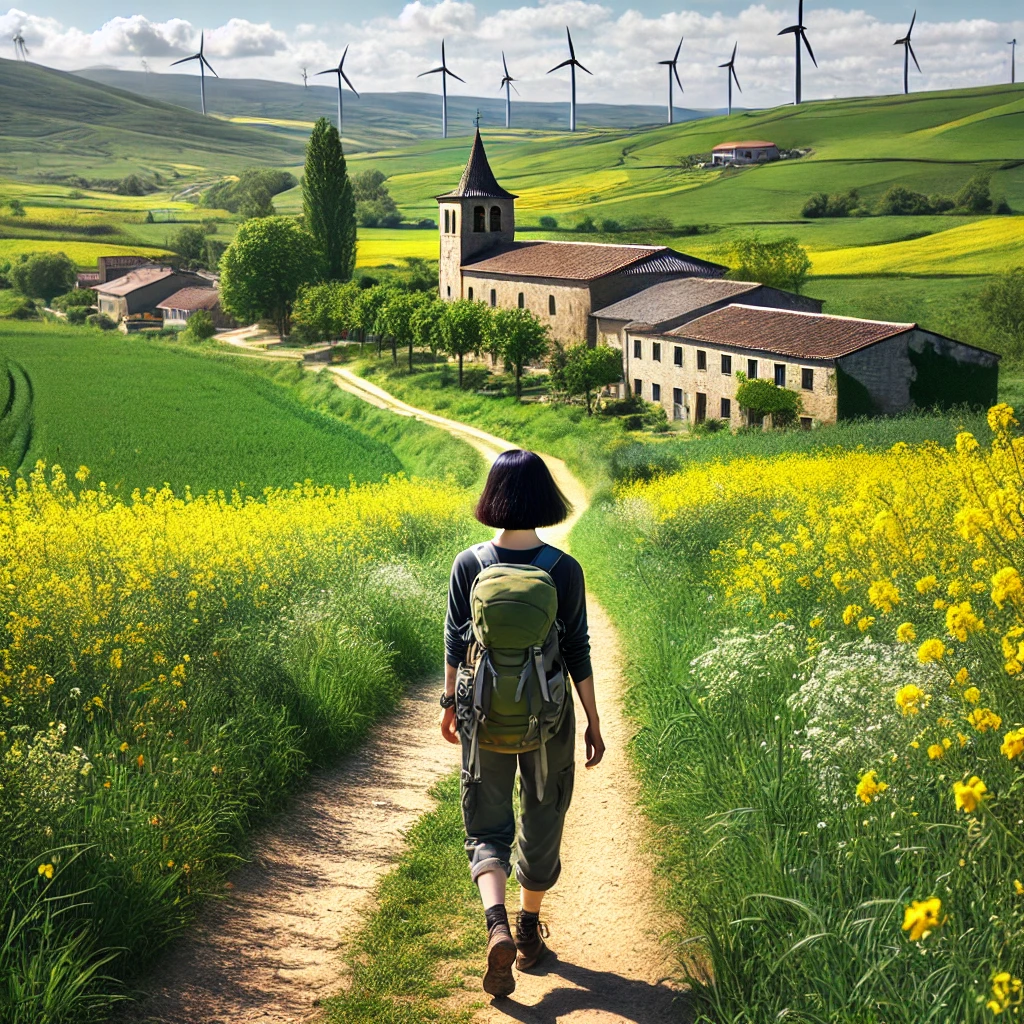ChatGPT:
The Camino de Santiago, also known as the Way of St. James (Camino de Compostela), is a network of ancient pilgrimage routes that lead to the Cathedral of Santiago de Compostela in Galicia, Spain. It has been one of the most important Christian pilgrimages since the Middle Ages, attracting people from all over the world.
Origin
• The origins of the Camino trace back to the early 9th century, when the tomb of St. James the Greater, one of Jesus Christ’s apostles, was discovered in Galicia. According to tradition, St. James preached in the Iberian Peninsula before returning to Jerusalem, where he was martyred. His body was later transported by his disciples to Galicia.
• The discovery of his tomb (in what is now Santiago de Compostela) transformed the area into a major religious center, rivaling Rome and Jerusalem as a pilgrimage destination.
History
1. Early Pilgrimage (9th–12th Century):
• Pilgrimages began in earnest after King Alfonso II of Asturias (r. 791–842) visited the site and declared it the resting place of St. James. He ordered the construction of a small church to house the relics.
• The pilgrimage gained momentum under King Alfonso III, who promoted the cult of St. James as a unifying force for Christian kingdoms during the Reconquista.
• In the 12th century, the monk Aymeric Picaud wrote the “Codex Calixtinus”, a guidebook for pilgrims. It included routes, advice, and descriptions of the regions along the way.
2. Medieval Golden Age (12th–14th Century):
• The Camino reached its peak, with pilgrims coming from all over Europe. Religious institutions, monasteries, and hospitals were built along the routes to assist travelers.
• Santiago became a symbol of Christian resistance during the Reconquista, with St. James depicted as “Santiago Matamoros” (St. James the Moor-Slayer).
3. Decline (15th–19th Century):
• Pilgrimage declined due to wars, religious upheavals (e.g., the Reformation), and the Enlightenment, which questioned traditional religious practices.
• In 1589, St. James’s relics were hidden to protect them from English raids, and their location was forgotten for over 300 years.
4. Modern Revival (20th Century–Present):
• The relics were rediscovered in 1879, sparking renewed interest in the pilgrimage.
• In the 20th century, the Camino saw a resurgence, thanks to efforts by local governments, the Catholic Church, and organizations promoting cultural tourism.
• The Camino was declared a UNESCO World Heritage Site in 1993, and Pope John Paul II endorsed it as a spiritual journey.
Development
• Routes: The Camino consists of multiple routes, the most popular being the Camino Francés (French Way), starting in Saint-Jean-Pied-de-Port, France, and covering ~800 km. Other routes include the Camino Portugués, Camino del Norte, and Via de la Plata.
• Cultural Importance: The Camino is a symbol of European unity and cultural exchange. Pilgrims encounter historical architecture, art, and traditions along the way.
• Pilgrim’s Credential: Pilgrims carry a Credencial del Peregrino (Pilgrim’s Passport) to collect stamps along the route, earning the Compostela, a certificate of completion.
• Modern Pilgrimage: Today, people undertake the Camino for various reasons: spiritual, cultural, or personal. Over 300,000 pilgrims reach Santiago annually.
The Camino de Santiago is more than just a religious pilgrimage; it is a journey through history, culture, and self-discovery, embodying the enduring human quest for meaning and connection.
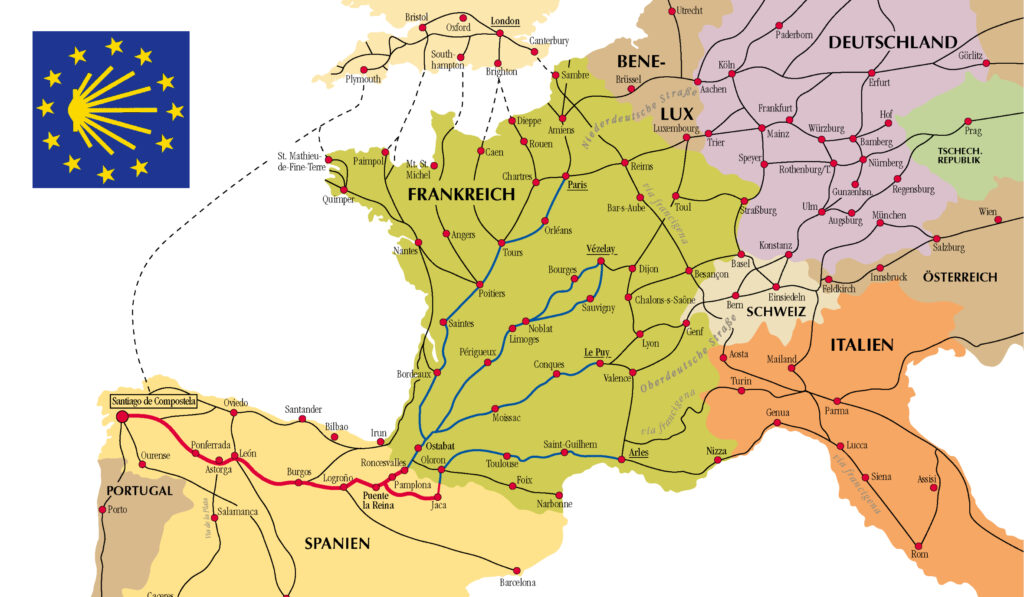
In addition to the French Way (Camino Francés), there are several other major Camino de Santiago routes, each offering unique cultural, historical, and geographical experiences. Here are the most notable ones:
1. Camino Portugués (Portuguese Way)
• Starting Points: Lisbon, Porto, or Tui.
• Length: ~620 km from Lisbon, ~260 km from Porto, ~120 km from Tui.
• Route: Runs north through Portugal into Spain, passing through cities like Coimbra, Porto, and Braga.
• Highlights: Coastal views, historic cities, and Portuguese hospitality. The Coastal Route option offers stunning ocean scenery.
2. Camino del Norte (Northern Way)
• Starting Point: Irún (on the French-Spanish border).
• Length: ~825 km.
• Route: Follows the northern coast of Spain through Basque Country, Cantabria, Asturias, and Galicia.
• Highlights: Rugged coastline, charming fishing villages, and cities like San Sebastián, Bilbao, and Santander. Less crowded than the French Way.
3. Camino Primitivo (Original Way)
• Starting Point: Oviedo.
• Length: ~315 km.
• Route: Crosses the mountains of Asturias and Galicia, merging with the French Way near Melide.
• Highlights: Considered the oldest Camino route, with breathtaking mountain scenery and a quieter, more challenging experience.
4. Via de la Plata (Silver Way)
• Starting Point: Seville.
• Length: ~1,000 km.
• Route: Runs north from southern Spain through Extremadura, Castilla y León, and Galicia.
• Highlights: Roman roads, remote landscapes, and cities like Mérida (with Roman ruins), Salamanca, and Zamora.
5. Camino Inglés (English Way)
• Starting Points: Ferrol or A Coruña.
• Length: ~120 km from Ferrol, ~75 km from A Coruña.
• Route: Shorter route used historically by pilgrims arriving by ship from England and northern Europe.
• Highlights: A quick yet rewarding journey through Galicia, with lush countryside and coastal views.
6. Camino Finisterre-Muxía
• Starting Point: Santiago de Compostela.
• Length: ~90 km to Finisterre, ~30 km more to Muxía.
• Route: Extends beyond Santiago to the Atlantic Coast, considered the “edge of the world” in medieval times.
• Highlights: A symbolic journey to the sea, with dramatic coastal landscapes and the iconic Finisterre Lighthouse.
7. Camino de Madrid
• Starting Point: Madrid.
• Length: ~320 km.
• Route: Passes through Segovia and Valladolid before joining the French Way near Sahagún.
• Highlights: Quiet, off-the-beaten-path route with historic cities and open landscapes.
8. Camino Aragonés (Aragonese Way)
• Starting Point: Somport Pass (on the French-Spanish border in the Pyrenees).
• Length: ~170 km.
• Route: Joins the French Way at Puente la Reina, passing through Jaca and other small towns.
• Highlights: Stunning Pyrenean scenery and Romanesque architecture.
9. Camino del Salvador (Salvador Way)
• Starting Point: León.
• Length: ~120 km.
• Route: Heads north through the Cantabrian Mountains to Oviedo, where it connects to the Camino Primitivo.
• Highlights: A rugged and challenging route with breathtaking mountain views.
10. Camino Mozárabe
• Starting Points: Málaga, Granada, Almería.
• Length: ~400–1,000 km depending on starting point.
• Route: Connects to the Via de la Plata near Mérida.
• Highlights: Crosses southern Spain’s rich Moorish-influenced regions and includes cities like Córdoba and Granada.
11. Camino de Invierno (Winter Way)
• Starting Point: Ponferrada.
• Length: ~270 km.
• Route: Offers an alternative to the French Way during winter, avoiding the snowy heights of O Cebreiro.
• Highlights: Stunning landscapes of the Sil River valley and quieter paths.
Each route offers its own challenges, scenery, and cultural experiences, allowing pilgrims to choose the one that best fits their interests and time constraints.
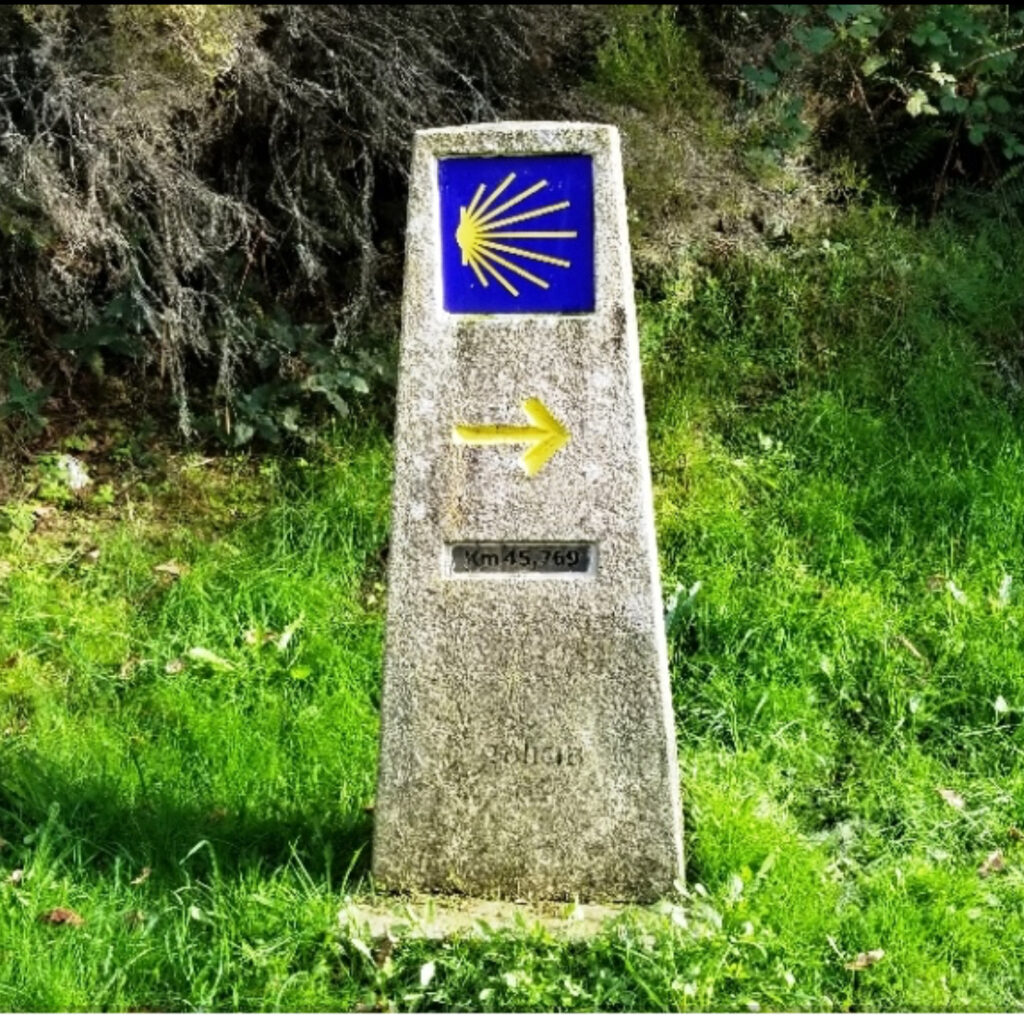
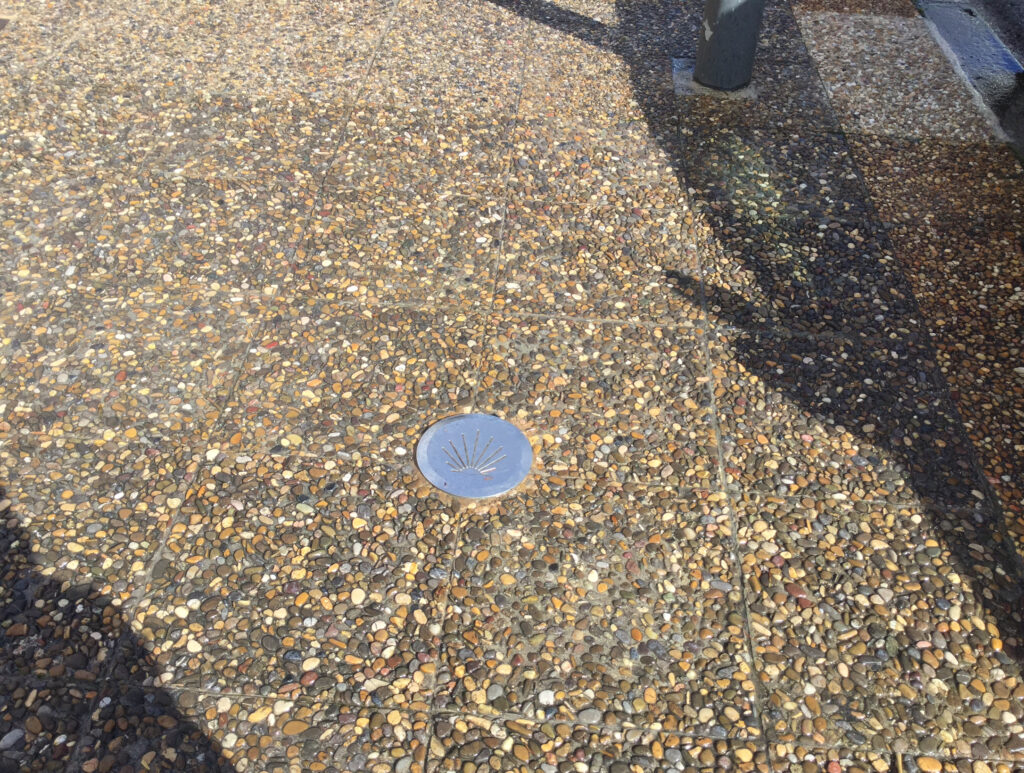
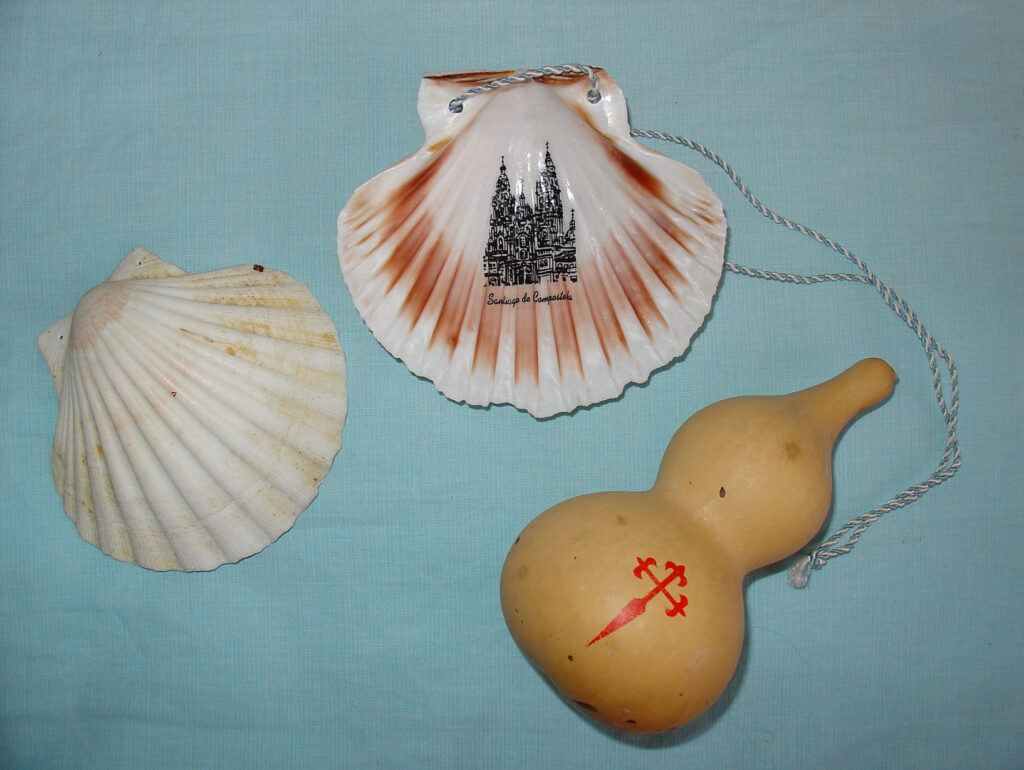
Here are some historically significant cities and towns along the major Camino de Santiago routes, particularly the Camino Francés (French Way), the most popular route:
1. Saint-Jean-Pied-de-Port (France)
• Starting point for the Camino Francés.
• A charming medieval town at the foothills of the Pyrenees, known for its cobbled streets, fortified gates, and beautiful views.
• Pilgrims cross the Pyrenees from here into Spain.
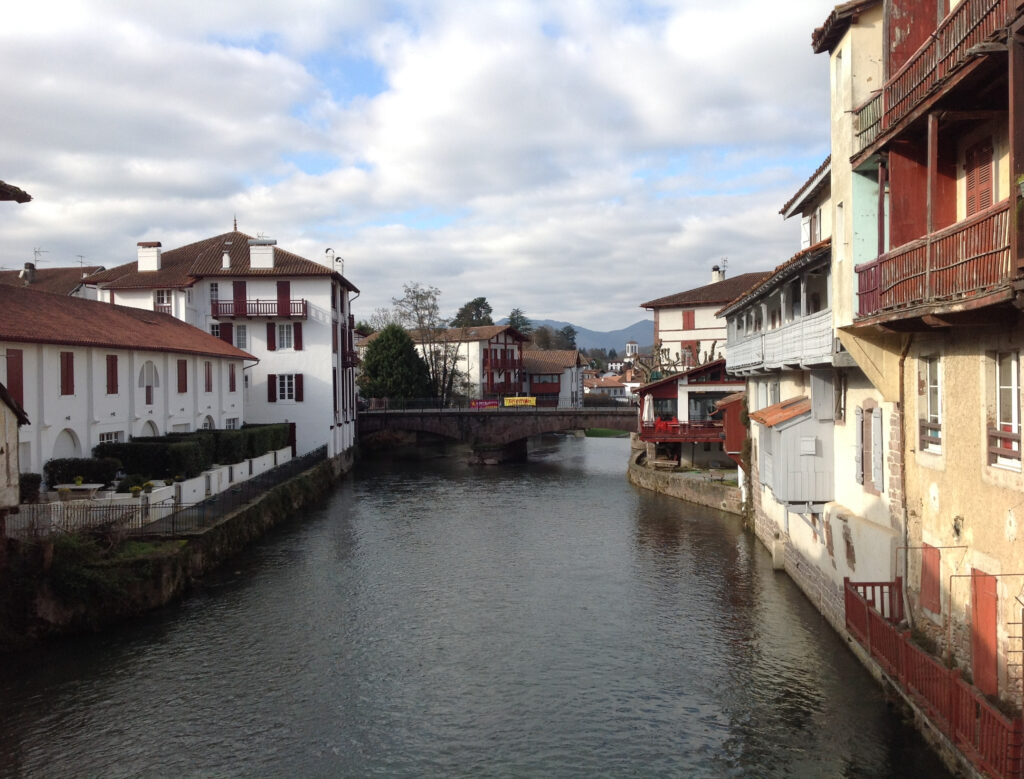
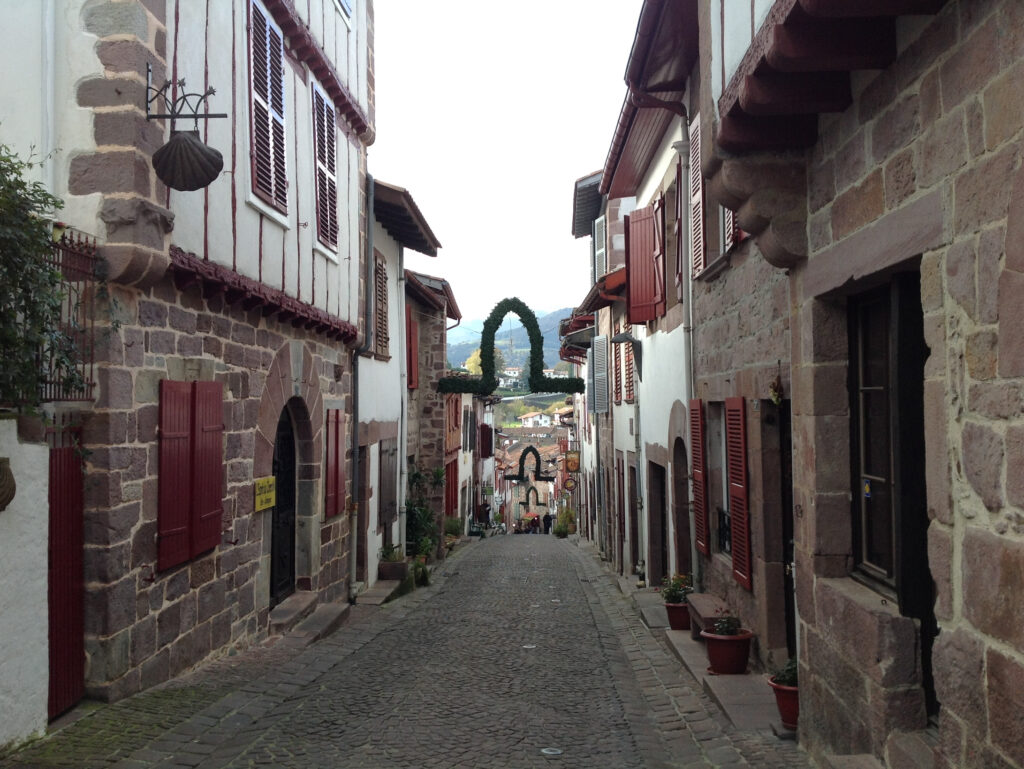
2. Pamplona (Spain)
• Famous for the Running of the Bulls during the San Fermín festival.
• A city with Roman origins, featuring the impressive Pamplona Cathedral and well-preserved medieval walls.
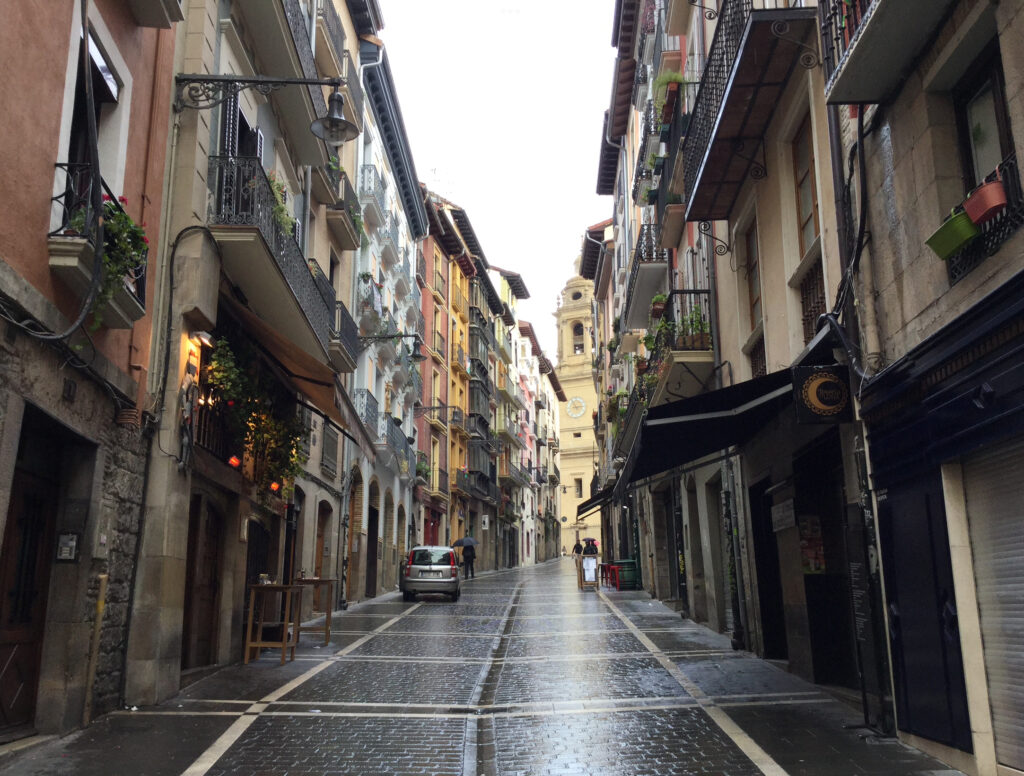
3. Puente la Reina
• Known for its medieval bridge, built in the 11th century to help pilgrims cross the Arga River.
• A crossroads where routes from France converge.
• Features Romanesque churches, including the Church of the Crucifix.
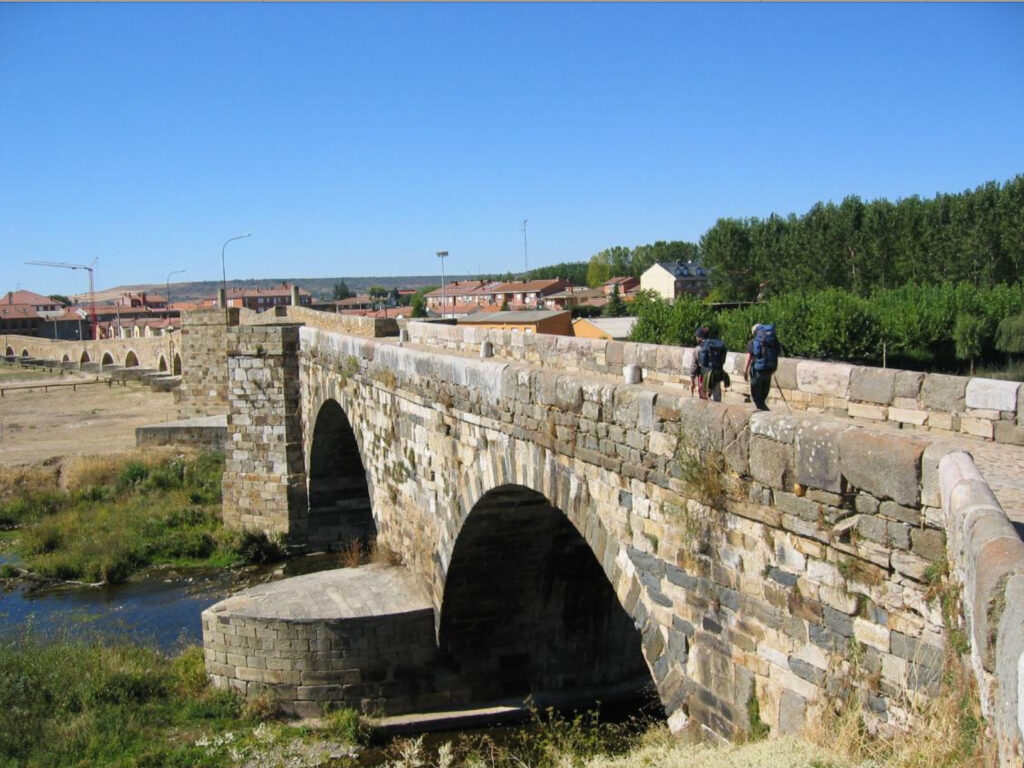
4. Logroño
• The capital of Spain’s Rioja region, renowned for its world-class wines.
• Pilgrims enjoy its tapas streets, such as Calle Laurel.
• Houses the Santiago el Real Church, with a famous statue of St. James.
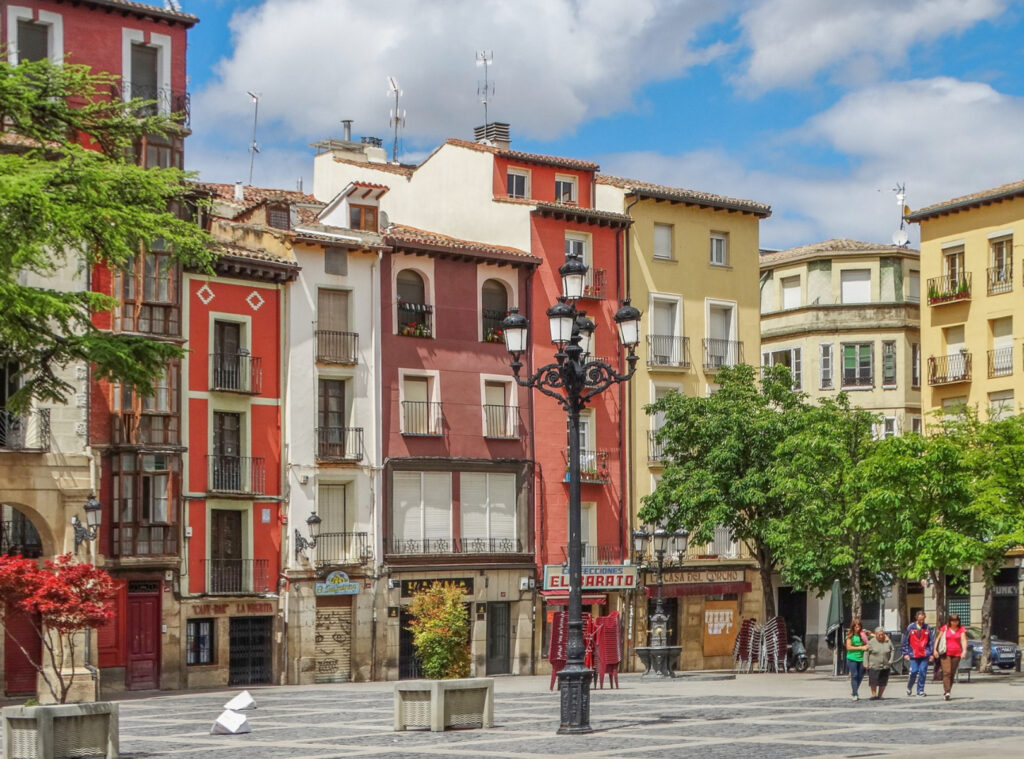
5. Burgos
• A major historical and cultural stop with the Burgos Cathedral, a UNESCO World Heritage Site and one of Spain’s Gothic architectural masterpieces.
• The city is linked to El Cid, the famous medieval knight and hero.
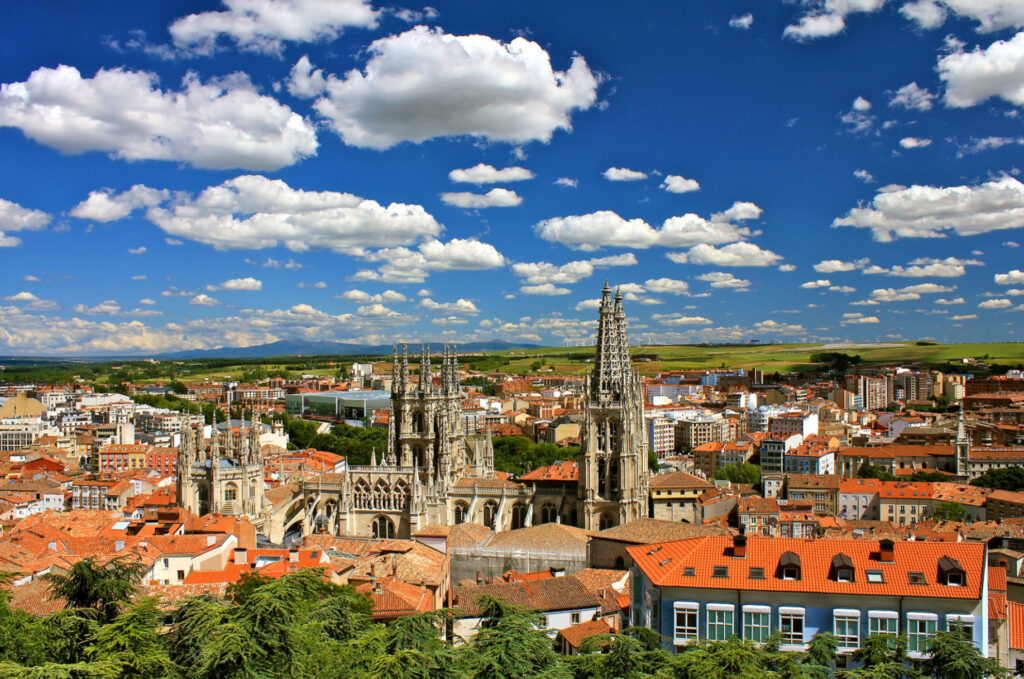
6. Carrión de los Condes
• A quiet town rich in religious history, featuring churches like Santa María del Camino and Santiago with its iconic pilgrim frieze.
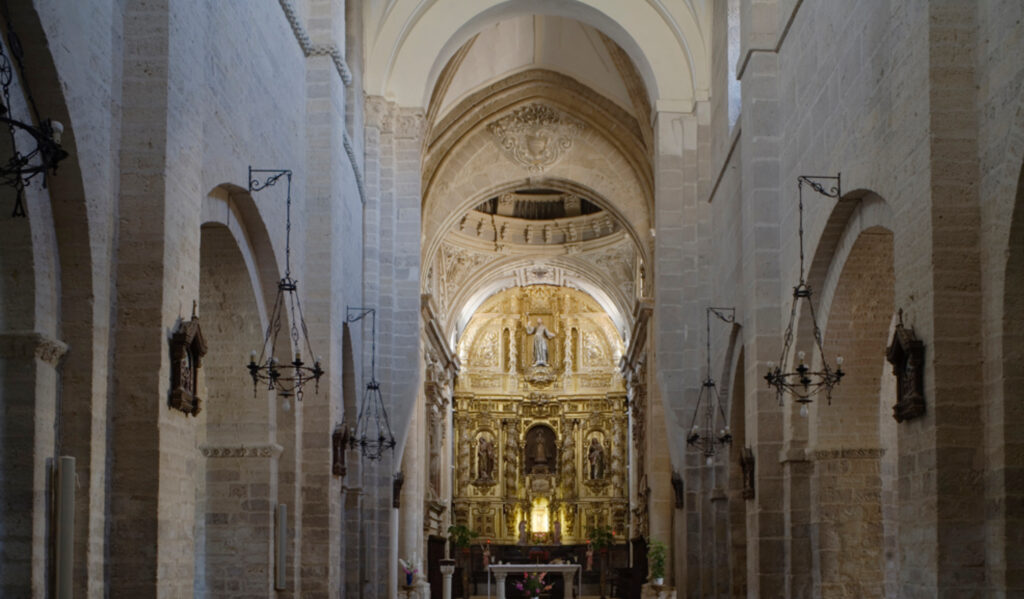
7. León
• A key stop with its stunning León Cathedral, famous for its stained glass windows.
• Home to San Isidoro Basilica, considered one of the finest examples of Romanesque architecture.
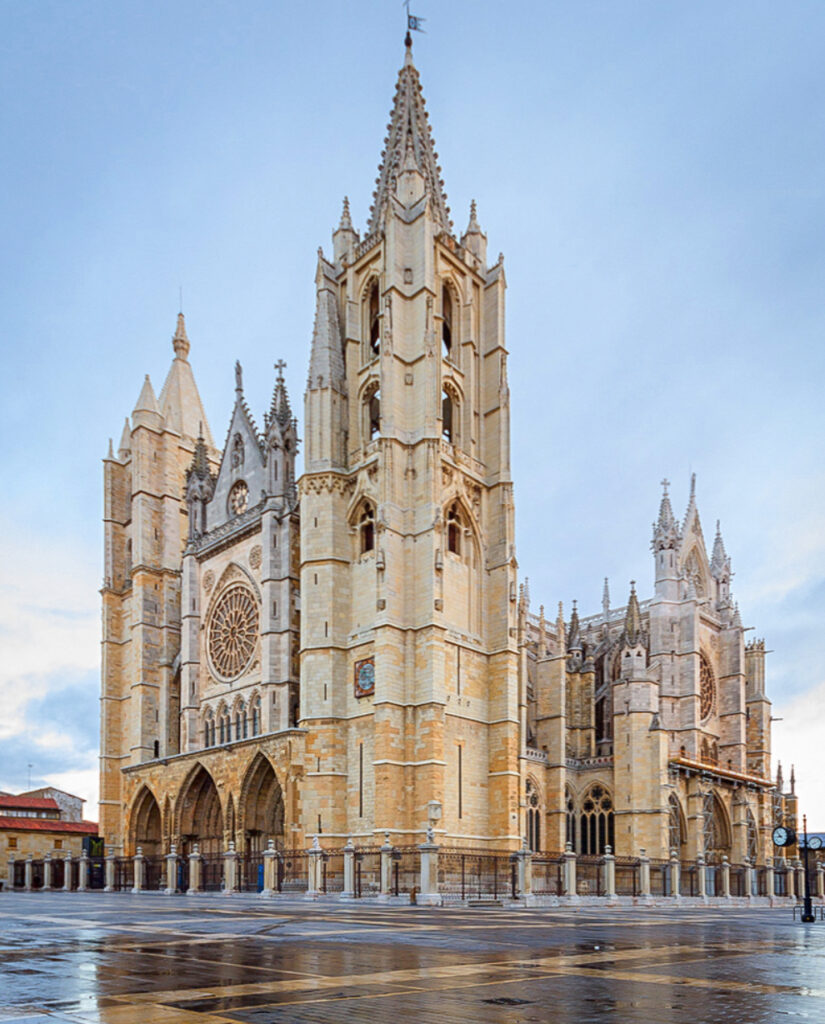
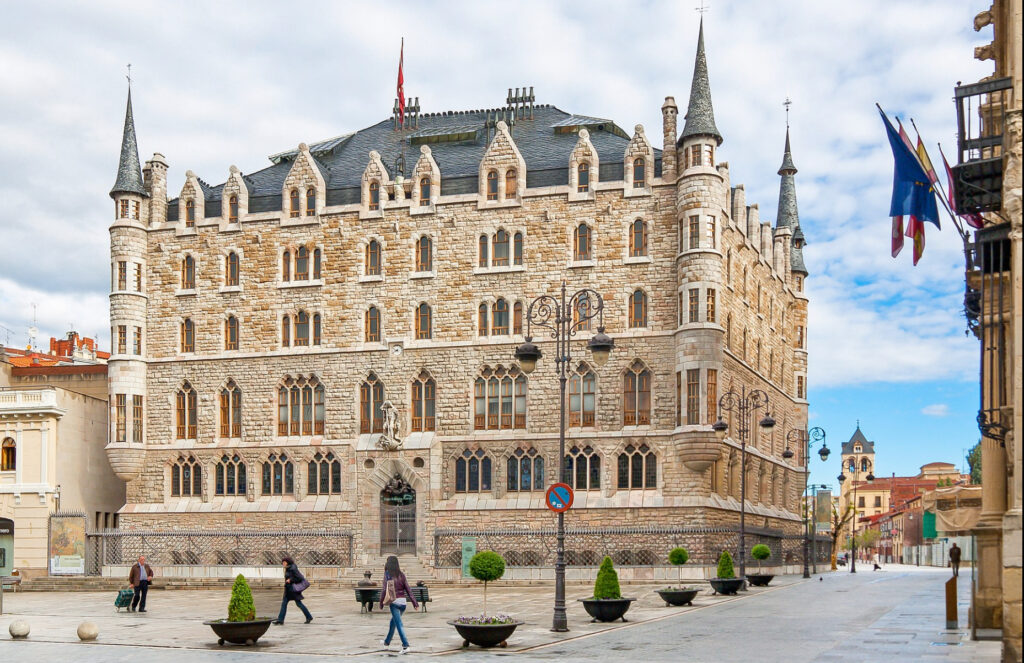
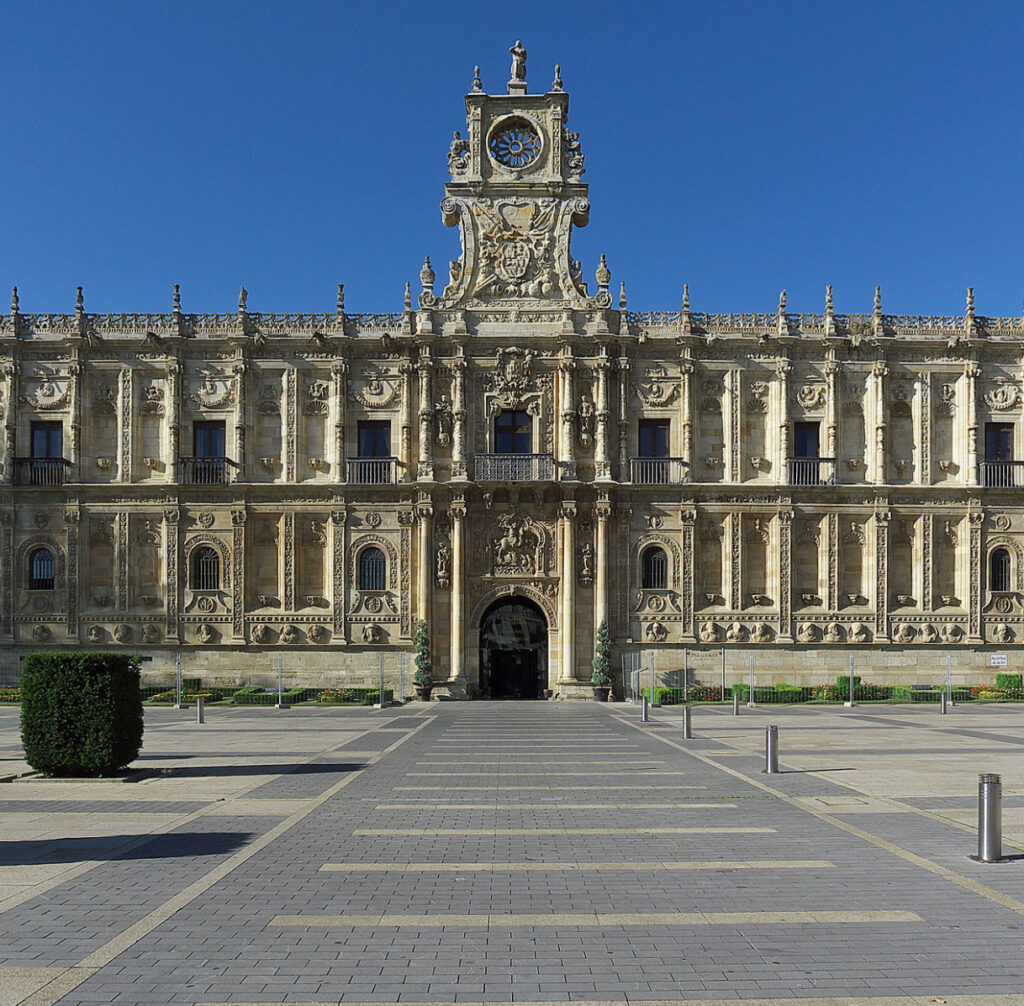
8. Astorga
• Features the Episcopal Palace, designed by Antoni Gaudí, and the Romanesque Cathedral of Astorga.
• A significant stop for its Roman roots and position as a crossroad for the Camino Francés and the Via de la Plata.
• Known for its traditional Maragato stew.
9. Ponferrada
• Famous for its Templar Castle, which guarded pilgrims on their way to Santiago.
• A town with medieval roots and connections to the Knights Templar.
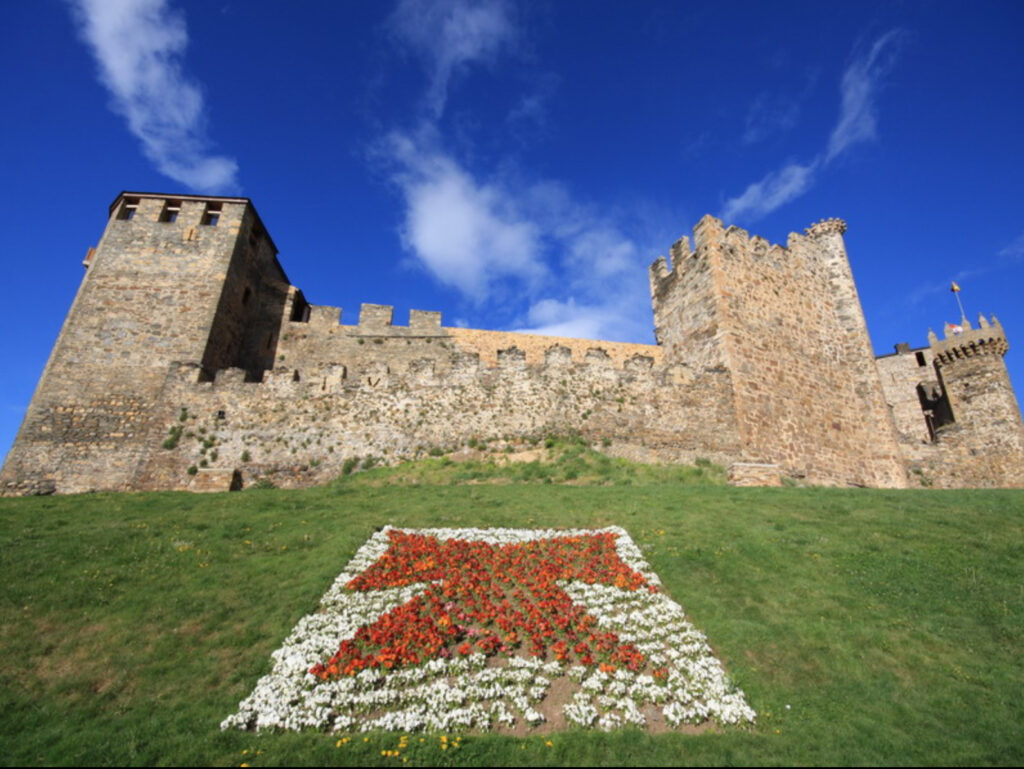
10. Villafranca del Bierzo
• Known as the “Gateway to Galicia.”
• Features the Church of Santiago, where sick or injured pilgrims could receive the same indulgences as those reaching Santiago.
11. O Cebreiro
• A small mountain village with pre-Romanesque Santa María la Real church, tied to the legend of the Holy Grail.
• Known for its pallozas, traditional round stone houses with thatched roofs.
• Offers stunning views and marks the entrance to Galicia.
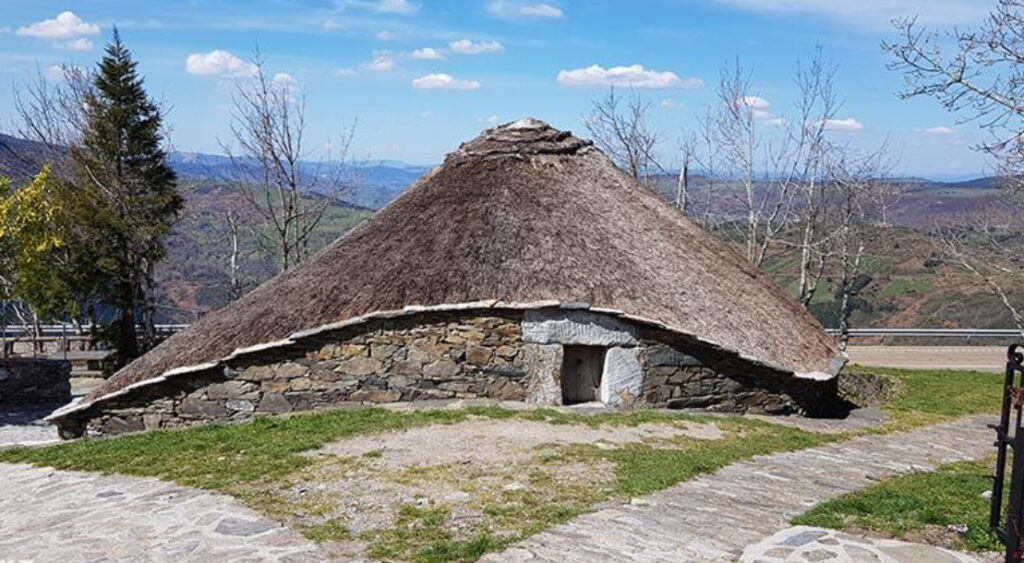
12. Sarria
• The most popular starting point for pilgrims walking the minimum 100 km required for a Compostela certificate.
• Features the Church of San Salvador and a medieval bridge over the River Sarria.
• A bustling town with a mix of history and modern pilgrim amenities.
13. Portomarín
• Relocated in the 1960s due to the construction of a dam; its historic buildings were moved stone by stone.
• Known for the Church of San Juan, a fortress-like Romanesque structure.
• Overlooks a scenic reservoir.
14. Melide
• Famous for its pulpo a la gallega (Galician-style octopus), a must-try for pilgrims.
• Houses Romanesque churches such as Santa María de Melide.
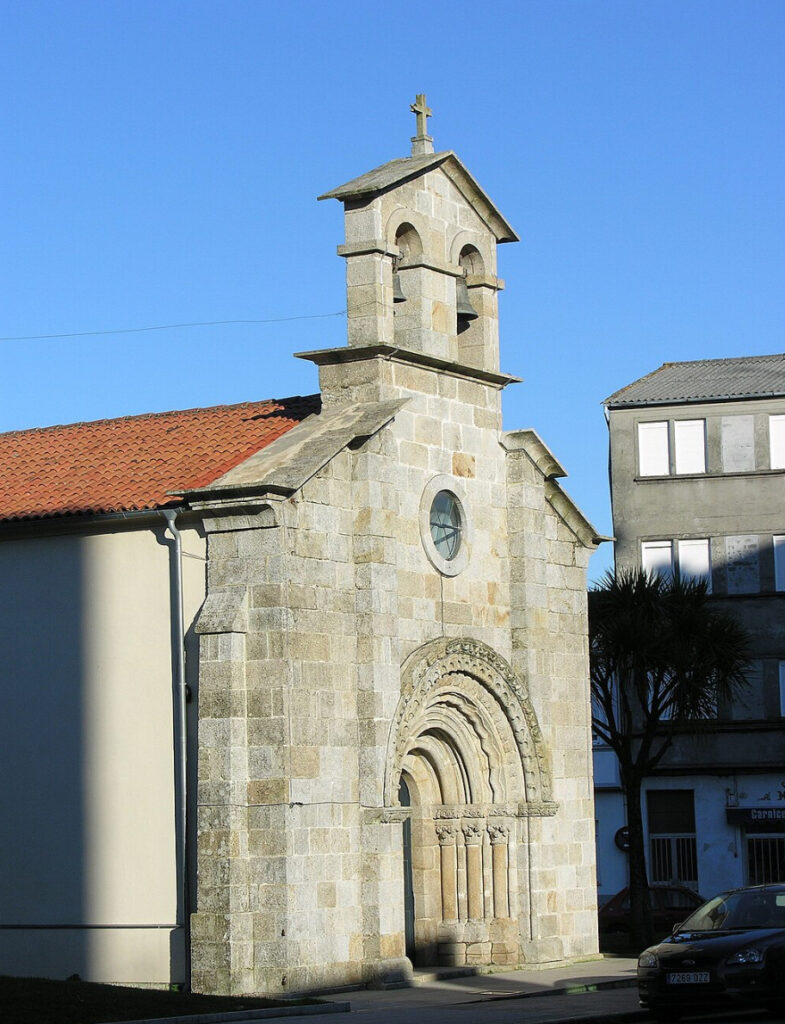
15. Santiago de Compostela
• The final destination and home to the Cathedral of Santiago, which houses the relics of St. James.
• A UNESCO World Heritage Site and spiritual center for pilgrims worldwide.
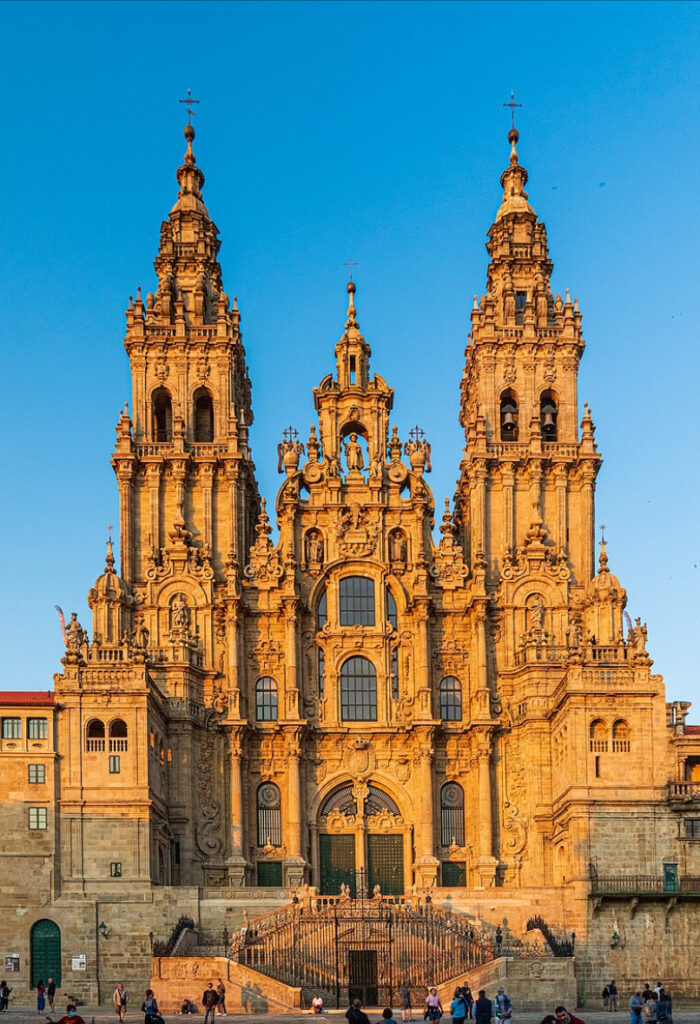
Each of these cities and towns offers a unique blend of history, culture, and spirituality, making the Camino de Santiago an unforgettable journey through time and tradition.
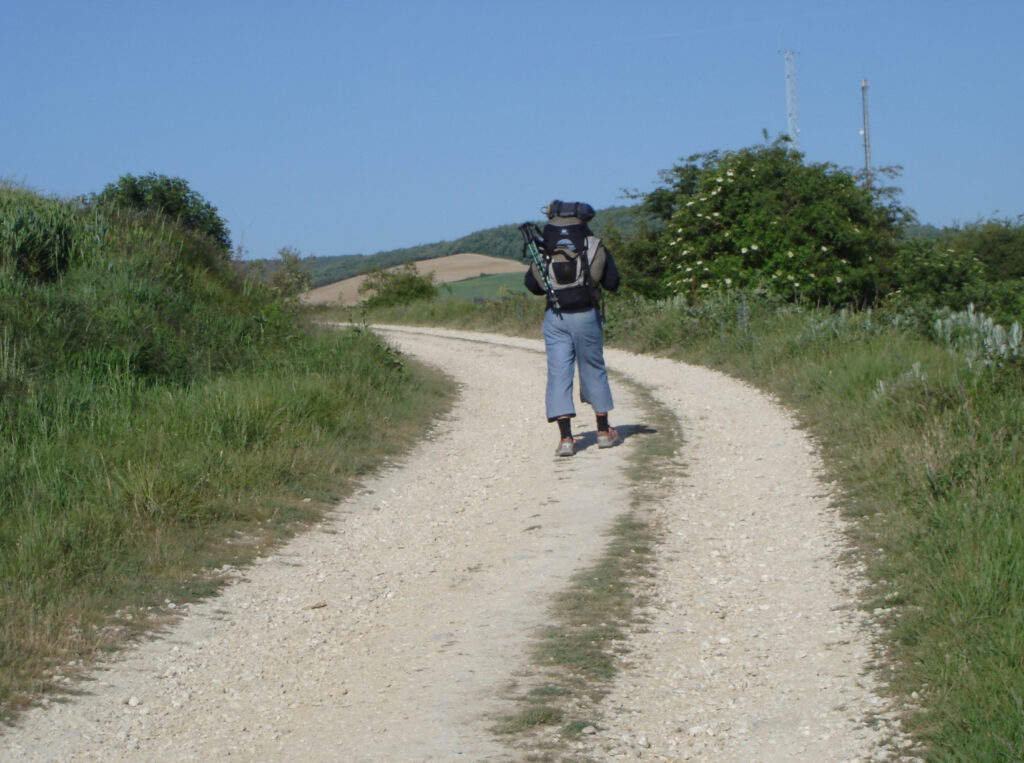
The Camino de Santiago is more than a pilgrimage; it is a profound journey through history, culture, and personal transformation. Its enduring appeal lies in its ability to connect people with the past, immerse them in diverse cultural experiences, and provide a space for self-reflection and discovery. Here’s an in-depth interpretation of how the Camino embodies these aspects:
1. A Journey Through History
The Camino de Santiago is steeped in history, with every step along its routes offering a connection to Europe’s medieval past.
• Religious Heritage: Originating in the 9th century, the Camino was established after the discovery of the tomb of St. James in Santiago. Pilgrims have been walking these routes for over a millennium, making it one of the world’s oldest pilgrimage networks. Walking the Camino places pilgrims in the footsteps of medieval travelers seeking spiritual redemption, miracles, or a deeper connection to faith.
• Architectural Landmarks: The route is dotted with Romanesque churches, Gothic cathedrals (like those in Burgos and León), Templar castles (Ponferrada), and ancient Roman infrastructure (such as bridges in Puente la Reina). These landmarks tell stories of the people and societies that built and used them, offering a tangible link to the past.
• Cultural Syncretism: As the Camino evolved, it became a melting pot for cultural exchange. Pilgrims from all over Europe brought their traditions, languages, and beliefs, influencing local customs and architecture. This history of convergence highlights the interconnectedness of human civilizations.
2. A Celebration of Culture
Walking the Camino is an immersive experience in the rich and varied cultures of Spain and beyond.
• Regional Diversity: Each region along the Camino offers unique traditions, dialects, and cuisines. For instance:
• Basque Country (Navarre) showcases its ancient language and pintxos culture.
• Rioja invites pilgrims to enjoy world-class wines.
• Galicia presents Celtic influences, a unique musical tradition, and iconic dishes like pulpo a la gallega (octopus).
• Festivals and Local Traditions: Pilgrims often encounter vibrant festivals, such as the San Fermín festival in Pamplona or local celebrations of saints. These events provide a glimpse into centuries-old traditions that continue to thrive.
• Art and Literature: The Camino has inspired countless works of art, music, and literature, from medieval illuminated manuscripts (e.g., the Codex Calixtinus) to modern films like The Way. This artistic legacy enriches the journey, encouraging pilgrims to see their experience as part of a larger cultural tapestry.
3. A Path of Self-Discovery
The Camino is renowned for its ability to foster personal transformation, making it a journey of self-discovery.
• Physical and Mental Challenge: Walking hundreds of kilometers, often over difficult terrain, pushes pilgrims to their physical and mental limits. This challenge fosters resilience and a sense of accomplishment. Overcoming obstacles on the trail often mirrors overcoming challenges in life.
• Reflection and Introspection: The simplicity of the journey—walking, eating, and sleeping—creates space for introspection. Pilgrims often find clarity about their goals, relationships, and values. The repetitive rhythm of walking can feel meditative, allowing the mind to focus inward.
• Community and Connection: While the Camino is often a solitary endeavor, it is also deeply communal. Pilgrims from diverse backgrounds share meals, stories, and experiences. The Camino fosters a profound sense of connection and reminds participants of the universal human need for companionship and understanding.
• Spiritual Growth: For many, the Camino is a deeply spiritual experience, even if they are not religious. The journey invites questions about life’s purpose, mortality, and the divine. Pilgrims often report feeling a sense of awe or transcendence upon reaching Santiago.
4. Embodying the Human Quest for Meaning and Connection
The Camino resonates with the universal human desire for meaning and connection in several ways:
• Purposeful Journey: The Camino represents a tangible, achievable goal—reaching Santiago and the tomb of St. James. This sense of purpose gives the journey a deeper significance, reflecting the human need to strive toward something greater.
• Symbolic Path: Walking the Camino mirrors the metaphorical journey of life, with its challenges, triumphs, and moments of joy. Each step is a reminder of life’s impermanence and the value of perseverance.
• Interpersonal Connection: The Camino brings together people of different cultures, ages, and beliefs, united by a shared experience. This fosters empathy, understanding, and lifelong friendships. The phrase “Buen Camino” (Good Way) symbolizes the universal camaraderie among pilgrims.
• A Timeless Legacy: The Camino continues to thrive because it speaks to fundamental human needs: the desire to belong, to understand our place in the world, and to connect with something larger than ourselves—be it history, community, or spirituality.
Conclusion
The Camino de Santiago is a living testament to the enduring power of pilgrimage as both a personal and collective experience. It allows individuals to connect with history, immerse themselves in cultural richness, and embark on a transformative journey of self-discovery. More than just a physical path, the Camino represents humanity’s timeless quest for meaning, purpose, and connection in an ever-changing world.
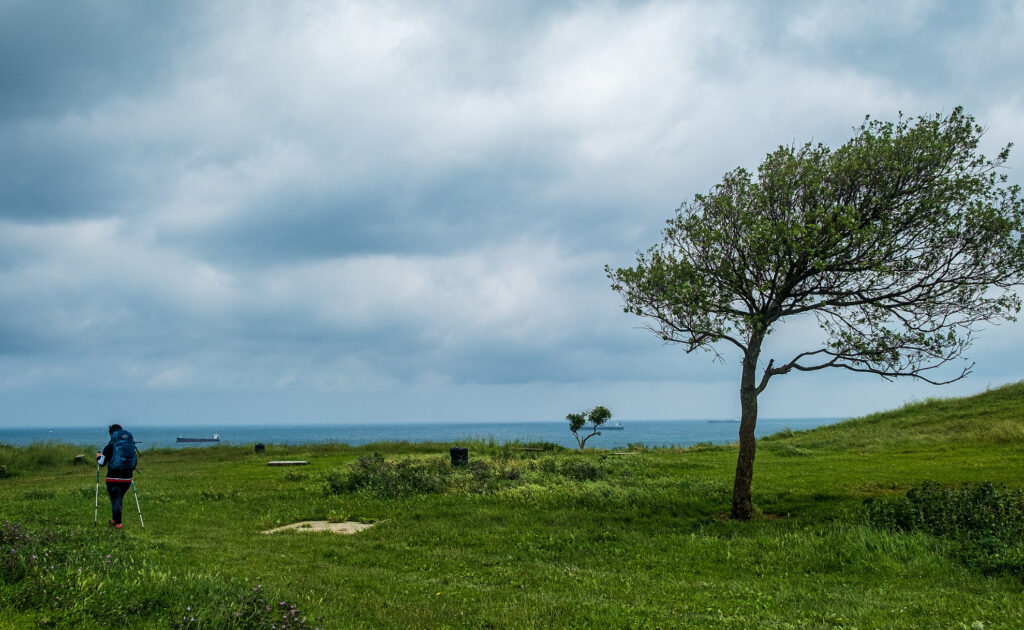
The Camino de Santiago has inspired numerous books and movies, capturing the spiritual, cultural, and personal significance of the pilgrimage. Here’s a list of some well-known works:
Books Inspired by the Camino
1. “The Pilgrimage” by Paulo Coelho (1987)
• A semi-autobiographical novel about Coelho’s own journey along the Camino. The book explores spiritual growth, self-discovery, and the challenges of the pilgrimage.
2. “I’m Off Then: Losing and Finding Myself on the Camino de Santiago” by Hape Kerkeling (2006)
• A humorous and heartfelt memoir by a German comedian chronicling his experiences walking the Camino. It became a bestseller in Germany and beyond.
3. “Walking the Camino: A Modern Pilgrimage to Santiago” by Tony Kevin (2007)
• A personal account of Tony Kevin’s journey as an older pilgrim, offering reflections on history, spirituality, and the challenges of the Camino.
4. “What the Psychic Told the Pilgrim” by Jane Christmas (2007)
• A witty memoir about the author’s pilgrimage, with candid insights into personal growth, relationships, and the unexpected trials of the Camino.
5. “Steps Out of Time: One Woman’s Journey on the Camino” by Katharine Soper (2014)
• A memoir of a woman navigating the physical and emotional challenges of the Camino, offering a deeply personal perspective.
6. “To the Field of Stars: A Pilgrim’s Journey to Santiago de Compostela” by Kevin A. Codd (2008)
• Written by an American Catholic priest, this reflective book explores the spiritual and historical aspects of the Camino.
Movies Inspired by the Camino
1. “The Way” (2010)
• Directed by Emilio Estevez and starring Martin Sheen, this poignant film follows a father who walks the Camino after his son’s death. It captures the transformative power of the pilgrimage and has popularized the Camino worldwide.
2. “Walking the Camino: Six Ways to Santiago” (2013)
• A documentary following six individuals from different backgrounds as they undertake the pilgrimage. It highlights the challenges, joys, and diverse motivations of pilgrims.
3. “Footprints: The Path of Your Life” (2015)
• A documentary about a group of young men walking the Camino under the guidance of a Catholic priest. It focuses on the spiritual and communal aspects of the journey.
4. “I’ll Push You” (2017)
• A touching documentary about two best friends, one of whom is confined to a wheelchair, as they complete the Camino together. It showcases themes of friendship, perseverance, and kindness.
5. “Buen Camino!” (2013)
• A Spanish documentary showcasing the stories of pilgrims from around the world and the cultural richness of the Camino.
6. “Saint Jacques… La Mecque” (2005)
• A French comedy-drama about three siblings who reluctantly undertake the Camino together after their mother’s death. The film blends humor with themes of family and personal growth.
Other References
• The Camino is also mentioned in popular travel guides and essays, such as Bill Bryson’s “Neither Here Nor There”, where he humorously reflects on his brief encounter with the pilgrimage route.
• It has inspired numerous online blogs, vlogs, and social media accounts documenting personal journeys.
These books and movies collectively illustrate the transformative power of the Camino, resonating with audiences through its universal themes of struggle, faith, and self-discovery.
